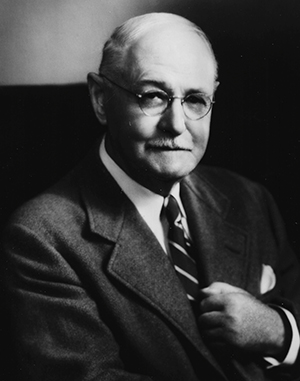
The Exmoor
course presents golfers with a classical golf experience, one that exemplifies
the Golden Age of golf architecture — 1910-1937 — a period when many of America’s
most influential courses were built. The layout features design antecedents to
the great courses of Scotland: imaginative grass-faced bunkers, challenging
green complexes and 18 holes shaped in natural ways by the land on which they
were built.
Donald J.
Ross, considered the “Dean”
of American golf course architects, designed the Exmoor golf course in 1915.
Golf architect Ron Prichard completed a course restoration in 2003, and working
recently with Mr. Prichard, Exmoor resurfaced
its greens with Pure Distinction bent grass, redefined green pads and added new
grass approaches to all greens.
Today, the
Exmoor course offers
strategic challenges that test every aspect of a player’s game, with broad
fairways that pinch to doglegs,
some greens with open run-ups, others with false fronts, and all greens with
contours offering multiple options for pin placements. Solidly struck shots to
the hearts of the greens are rewarded, but shots to the edges of greens may run
off to collection areas, where golfers are faced with one of the game’s timeless dilemmas: whether to chip or putt.
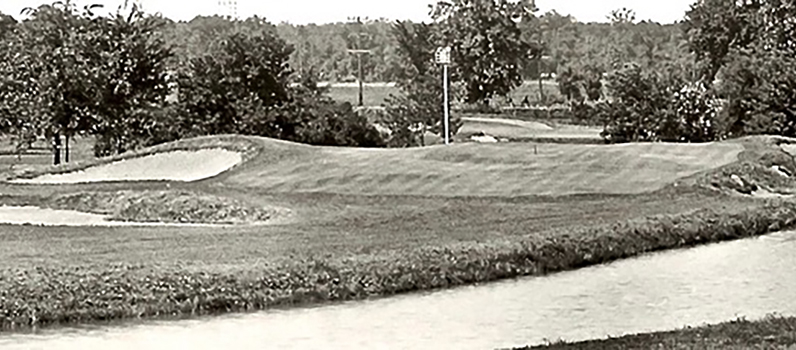
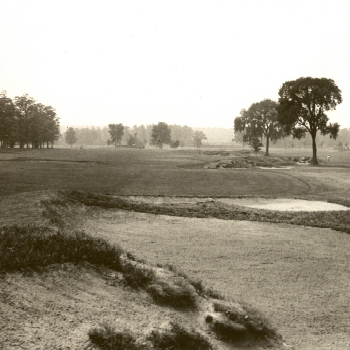
Exmoor is located on the
crest of a 12,000-year-old glacial ridge, a geological feature that inspired
Mr. Ross to direct the course of play in varied directions: uphill, downhill
and across the flatter areas of the Club’s 155 acres.
Donald Ross
crafted a course that requires golfers to gauge the ideal playing angles off
the tee and to assess the risk-or-reward of each stroke. Players learn quickly
to be alert to the changing winds off Lake Michigan, one mile to the east,
which may shift directions, two or three times during a round.
Golfers of all
skill levels feel comfortable, yet tested, with six tee options, playing from
5,400 yards to 7,149 yards in length.
Donald Ross
A native of
Dornoch, Scotland, Donald Ross apprenticed at the Old Course in St. Andrews
under the guiding hand of Old Tom Morris, Scotland’s famous 19th century
champion player and course architect. After coming to America in 1899, Mr.
Ross designed nearly 400 golf courses and is renowned for incorporating aspects
of strategic design he learned from his days at St. Andrews and as greenskeeper
and head professional at the course in Dornoch.
From 1901 until his
death in 1948, Mr. Ross introduced bold, innovative courses that have withstood
the test of time, such as his creations at Oakland Hills, Pinehurst #2, the
Inverness Club — and Exmoor.
Scottish
Links
When Mr. Ross
arrived to Exmoor in 1915, he may have been surprised to learn that the Club
had strong links to Scottish golf architecture for nearly two decades. Our
original nine-hole course of 1897 was designed by men with first-hand
experience in Scotland: C. B. Macdonald, considered “the father of modern golf
architecture” in America, H. J. Tweedie and H. J. Whigham. In 1908, Scotsman Stewart Gardner, our head professional who grew up playing the course at Prestwick (a British Open venue), designed a new 18-hole layout at Exmoor.
At age 46, and nearing the height of his design prowess, Mr. Ross walked the Exmoor property, listening to club officials, taking notes, and thinking deeply about design changes that would elevate the course to a new level of championship quality. Project work began in the fall of 1915 with improvements to the first three holes. In the manner of the layout at Muirfield in Scotland, he retained Stewart Gardner’s routing of the front nine along the perimeter of the course and the back nine within the heart of the Exmoor property.
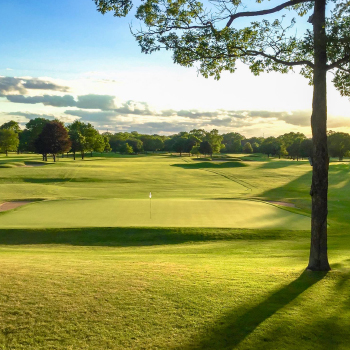
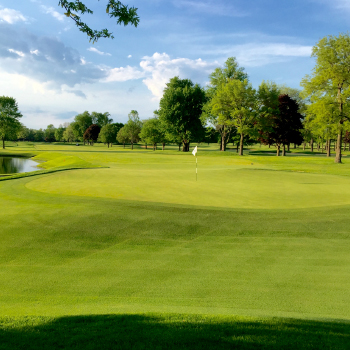
Greens were
raised and sloped from back to front, and Mr. Ross squared the fronts and backs of some greens, while adding deceptive false fronts to others. Greenside bunkers played their role, but the fronts of most greens were left open — again in classic style — enabling players to keep their shots under the wind and roll them onto the green, just as Mr. Ross did as a young man on the sandy soil of windswept St. Andrews. Workers dug a new lake on hole #3 with shovels and horse-drawn scrapers, then used the soil to raise the fairway, while adding several new holes — ones we play today.
Donald Ross referenced famous holes from his homeland. Our 8th hole, an uphill par three, resembles the fortress-like Redan hole at North Berwick in Scotland. The 12th hole, with its raised green, deep bunkers and severe back-to-front slope, recalls one of golf’s best mid-range par threes: the famous Eden hole, #12 at the Old Course in St. Andrews.
After the club expended $40,000, and as the project neared completion in 1918, Mr. Ross declared our 17th hole — then a par five with its elevated tee and distant sight lines to the west edge of Highland Park — a personal favorite.
Golf great Chick Evans, an Exmoor member and winner of eight Western Amateur championships, two U.S. Amateurs and the U.S. Open, praised the new course in 1916: “Last Thursday I played at Exmoor … and the course has pleasing curves that swung with the land, and new theories of bunkering were being put into practice … to make it more interesting for the modern player. These changes are being made under the direction Donald Ross.”
A Championship Venue
Our course has been honored
as the site of 18 national championships organized by the United States Golf
Association, the Western Golf Association, the Women’s Western Golf Association
and PGA TOUR Champions. Famous competitors have included British Open champion
James Anderson and three U.S. Open champions: Alexander Smith, James Foulis and
Chick Evans. Others include: Walter Travis, Virginia Van Wie, Helen Hicks,
JoAnne Carner, Frank Stranahan, Harvie Ward, Jr., Bill Campbell, Hunter Mahan,
Justin Thomas, along with famous Exmoor members S. Davidson Herron, H. Chandler
Egan and Walter Egan. Most recently, the world’s top senior players
competed in one of the PGA TOUR Champions’ five major tournaments, the
2018 Constellation Senior Players Championship. World Golf Hall of Famer Vijay
Singh bested a field that included major champions Hale Irwin, Larry Mize,
Bernhard Langer and Tom Lehman.
Course Restoration of 2003
Known for his historically-accurate work on Ross courses, Ron Prichard used early course plans and old aerial photos to recapture original Ross features, such as the spectacular fairway cross bunkers on hole #16. Some green pads were expanded with “catcher’s mitts,” new areas on the putting surface that enable exciting — often diabolical — pins placements. Grass-faced bunkers with flat bottoms — another classical feature — were returned to the course, with some rotated perpendicular to the line of play.
Recent
improvements, guided by the greens committee, add to the excitement of playing
Exmoor:
- Fairways were realigned on most holes to create cleaner lines and new playing angles into the greens.
- Bent fairway grass was extended to the front edges of bunkers, so that poorly struck shots roll to where the land wishes to take them — into the bunker.
- Greens were expanded to utilize the entire original green pads and recapture some original pin locations.
- A new championship tee was built on hole #6, making this now a true three-shot, double-dogleg hole measuring 543 yards.
- Selective tree removal has opened up the course with wonderful new vistas, much as Mr. Ross found the Exmoor land, a former sheep farm, when he arrived to Exmoor so long ago.
These steps have inched the Exmoor golf course ever-closer to its original, authentic self, as conceived by a master of golf architecture, Donald J. Ross.
Preservation of the golf course is a priority. Guided by a Long-Range Master Plan, Exmoor maintains a standing committee, whose role is to preserve the intent and design integrity of the original Donald Ross course of 1915 and to implement subsequent course improvements.
The Experience
Those who play the Exmoor course today will experience what golf enthusiasts 100 years ago called “an atmosphere” — a sense — a feeling — of Old World style, of visually interesting holes, a mix of short par fours and uphill ones that seem like par fives, of lakes and long grasses, of holes that require creative shotmaking, and a course routing with a natural flow — one hole to another — over both wooded and open terrain, delivering, all in all, a round of golf that is fun, enjoyable and ever challenging.
A walk down Exmoor’s 18th fairway ends a round of golf with a panoramic view of the clubhouse and the green below. Step on the green, and you are at the center of an amphitheater, surrounded by century-old trees and … spectators! From the porch above, members and guests cast discerning eyes toward the final strokes of the golfers below. It’s an Exmoor tradition.
Thanks to Mr. Ross, for more than a century, members and guests at Exmoor have enjoyed a comprehensible test of golf — one that pits the player, a club and a ball against the gravity, the land and the wind.
With his original layout so evident today — and with so many identifiable features attributed to him — the Exmoor course continues in its second century, as an authentic Donald Ross masterpiece.
By Donald R. Holton
Historian, Exmoor Country Club
April 6, 2018